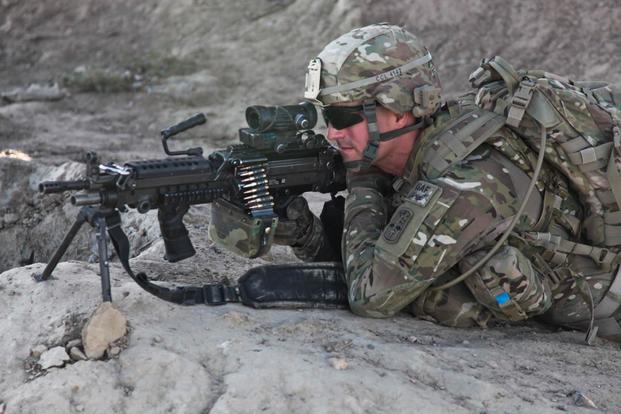U.S. Army modernization officials on Wednesday briefed lawmakers on the service's plan to equip soldiers with futuristic small arms that will ultimately replace the M4 carbine and the M249 squad automatic weapon.
Lt. Gen. John Murray, deputy chief of staff for Army G8, testified with other Army modernization generals before the Senate Armed Services Committee's Airland subcommittee on the future of Army modernization.
Subcommittee chairman Sen. Tom Cotton, R-Arkansas, wanted to know what the Army is doing about enemy body armor that the current 5.56mm round is unable to penetrate.
"There has been a proliferation of body armor, specifically Russian and Chinese, designed to defeat traditional 5.56mm NATO ammunition which is of course what our soldiers fire from their M4s," Cotton said. "What are we doing to address what is a very serious issue for the soldier on the front lines?"
Related content:
- US Army to Search for New 7.62mm Rifle
- Army Eyeing 6.5mm for Its Future Battle Rifle
- Equipment Guide: M4 Carbine
Last May, Gen. Mark Milley testified to the Senate Armed Services Committee that the service's current M855A1 Enhanced Performance Round will not defeat enemy body armor plates similar to the U.S. military-issue rifle plates such as the Enhanced Small Arms Protective Insert, or ESAPI.
The revelation launched an ad-hoc effort to acquire new 7.62mm Interim Service Combat Rifle, mainly for infantry units, but the idea quickly lost momentum.
Now the service has a two-phased approach, which starts with acquiring a standardized 7.62mm Squad Designated Marksmanship Rifle, Murray said.
"That gives us the ability to penetrate the most advanced body armor in the world," he said. "We are accelerating the Squad Designated Marksman Rifle to 2018; we will start fielding that in 2018."
The Army had hoped to start fielding the advanced 7.62mm armor-piercing round in 2018 as well, but that effort will take another year to complete, Murray said.
The SDMR "will still penetrate that body armor, but you can't get that extended range that is possible with the next generation round," Murray said.
Phase two of the effort will be the development of the Next Generation Squad Weapon.
"The first iteration will probably be an automatic rifle to replace the M249 squad automatic weapon, which is also a 5.56mm," Murray said.
The Army has decided, however, that it isn't interested in following the Marine Corps' adoption of the M27 Infantry Automatic Rifle.
"We have been pushed on the M27, which the Marine Corps has adopted, that is also a 5.56mm which doesn't penetrate, so we are going to go down a path next generation squad weapon automatic rifle first to be closely followed, I'm hopeful, with either a rifle or a carbine that will fire something other than a 5.56mm.
"That is what we see as a replacement for the M4 in the future."
Murray added that "It probably won't be a 7.62mm; it will probably be something in between -- case-telescoping round, probably polymer cased to reduce the weight of it.
Murray also confirmed that the Army already has a science and technology demonstration weapon, made by Textron System.
The working prototype has evolved out Textron's light and medium machine guns that fire 5.56mm and 7.62mm case-telescoped ammunition developed under the Lightweight Small Arms Technology program.
Over the last decade, the Army has invested millions in the development of the program, which has now been rebranded to Textron's Case-Telescoped Weapons and Ammunition.
"It's too big; it's too heavy," Murray said. "We have recently opened it up to commercial industry for them to come in with their ideas. We have offered them some money to come in a prototype it for us that type of weapon."
Murray said that such as weapon "can achieve weights similar to the M4's 5.56mm ammo -- the weapon will probably weigh a little bit more, the ammo will weigh a little bit less and we can get penetration on the most advanced body armor in the world well out beyond even the max effective range of the current M4."
The Army had planned on fielding a the new Next Generation Squad Weapon by 2025-2026, but the service has now accelerated the effort to have some kind of initial capability by 2022 or 2023 at the latest, Army officials maintain.
-- Matthew Cox can be reached at matthew.cox@military.com.










